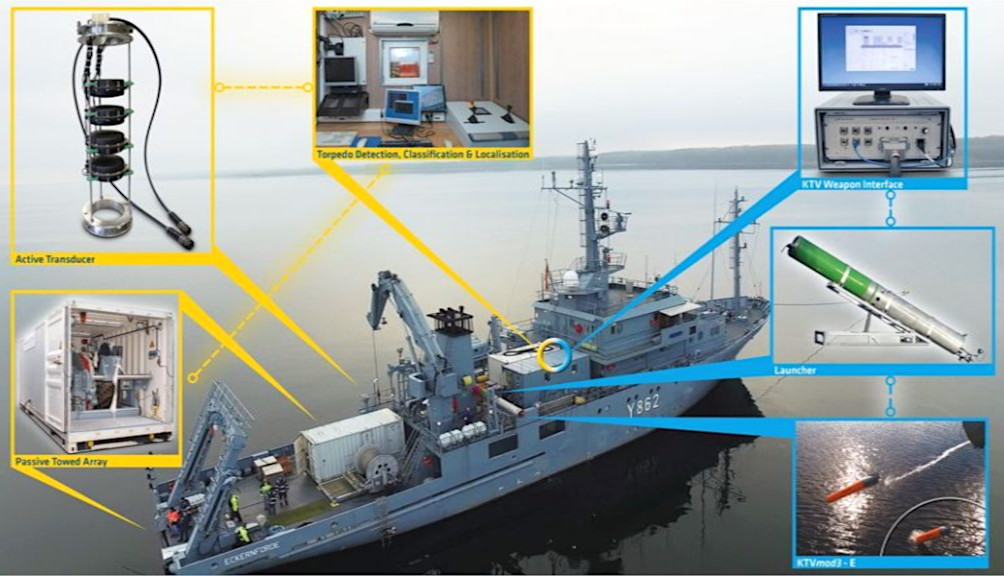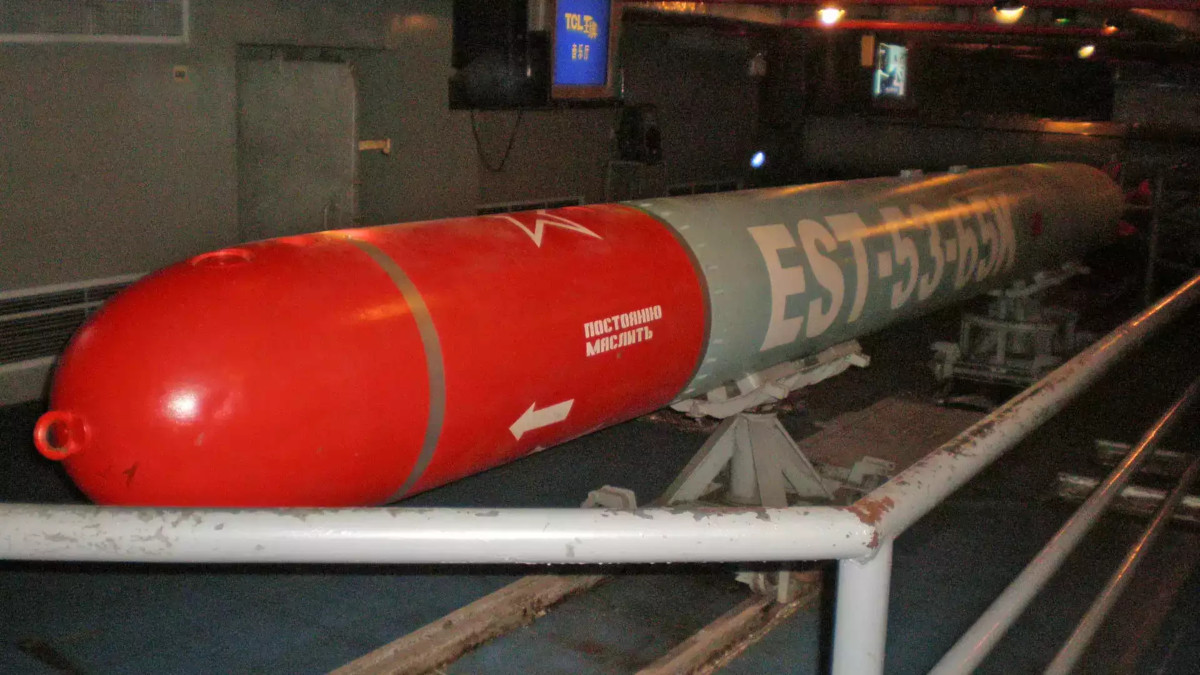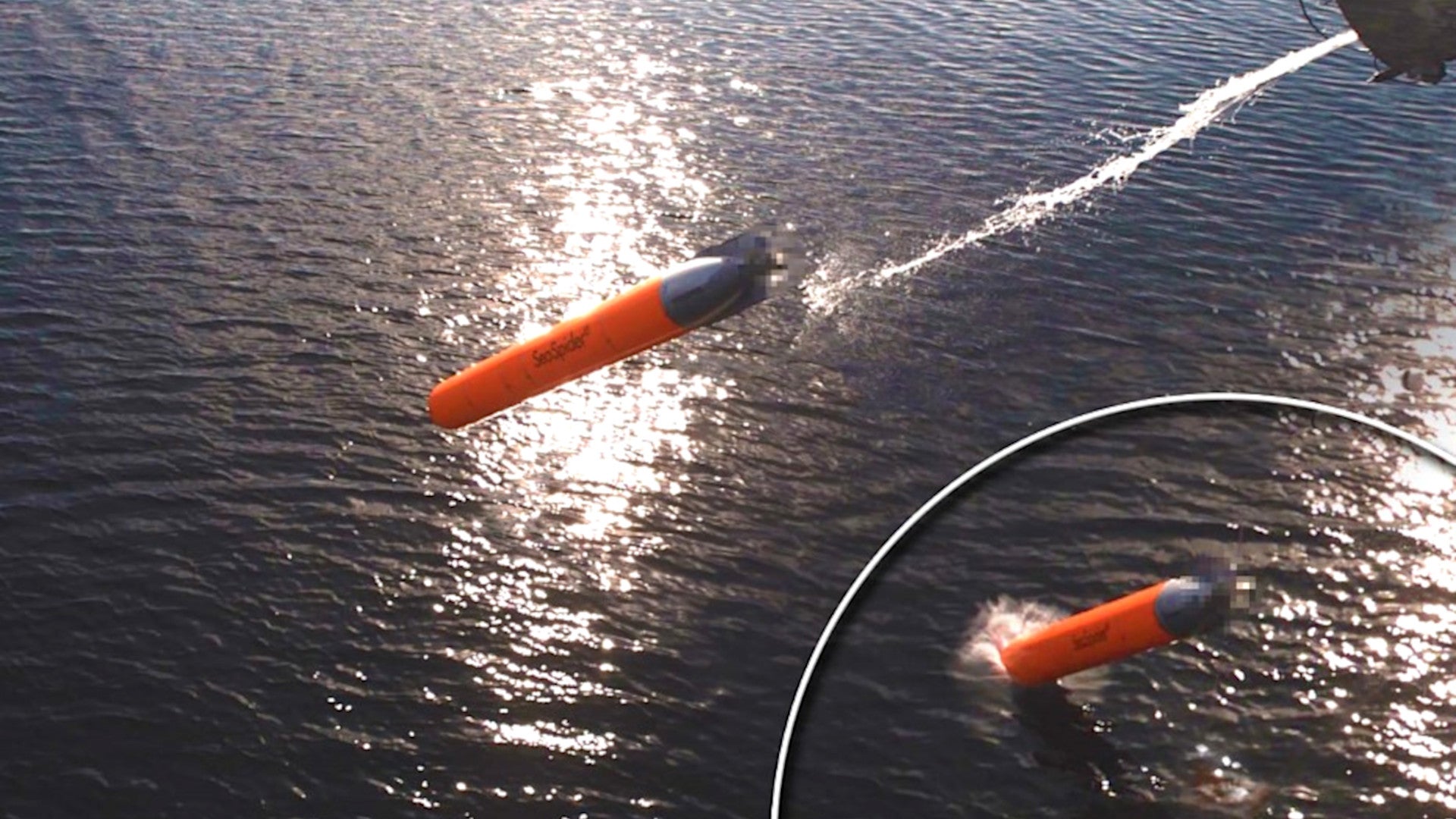German and Canadian defense contractors are moving ahead with the development of a rocket-powered hard-kill anti-torpedo defense system called SeaSpider that they hope could become a standard feature on naval vessels in both of those countries. The project is another example of growing interest around the world in anti-torpedo torpedoes to defeat increasingly advanced threats. The War Zone
has been closely following the U.S. Navy’s own effort, which you can read about in depth in a recent feature.
On Apr. 12, 2019, Canada’s Magellan Aerospace Corporation announced it had entered into a partnership with Atlas Elektronik Canada, a subsidiary of Germany’s ThyssenKrupp Marine Systems, to continue design and development of SeaSpider. This came just days after it emerged that German Armed Forces’ Technical Center for Ships and Naval Weapons and Maritime Technology and Research, also known as WTD71, had conducted sea trials of the anti-torpedo torpedo system using the German Navy’s Schwedeneck-class test ship Helmsand between 2017 and 2018. Magellan Aerospace and Atlas Elektronik have been working together on parts of the system since 2016, when Magellan first agreed to provide the rocket motor and warhead section for the interceptor.
“The partnership between Atlas and Magellan will bring to market an innovative new torpedo defense system that will be the first of its kind in this growing market segment,” Haydn Martin, Magellan Aerospace’s Vice President for Business Development, Marketing and Contracts, said in a press release. “We welcome the opportunity to collaborate in this exciting new endeavor with Atlas Elektronik.”
For surface ships, the complete SeaSpider system consists of one or more launchers with multiple interceptors, each packed inside their own self-contained canister, and a passive towed sonar. There is also a centralized control system capable of classifying and localizing incoming threats, cueing the anti-torpedo torpedo, and launching it to intercept the target.

The actual interceptor has its own sonar system that can operate in active or passive modes. The hard-kill system can then either defeat that target with its explosive warhead or by physically slamming into it.
SeaSpider’s most novel feature is the use of a rocket motor rather than more traditional chemical or electric propulsion systems found in most torpedoes. Atlas Elektronik says the resulting system is quieter, which in turn makes it easier for it to “hear” the threat and lock on. Magellan Aerospace Corporation also reaches its top speed very quickly, meaning that the interceptor sinks less after launch, making it well suited to shallower water environments. The configuration is sensitive enough that Atlas Elektronik blurred out the rear of the interceptor in the photo it released of one of the launches during the sea trials.

Atlas Elektronik also says that SeaSpider can be employed by submarines, either from hull-mounted launch tubes, such as those typically used to employ traditional acoustic decoys, or from its torpedo tubes. In the latter case, the company says it would provide a sub-caliber insert to stabilize more than one of the small anti-torpedo interceptors inside the larger tube.

“The full ‘sensor to shooter’ functional chain of a hardkill surface ship torpedo defense system with torpedo detection, classification and localization (TDCL) and the SeaSpider anti-torpedo-torpedo (ATT) has successfully been demonstrated on a surface ship,” Atlas Elektronik had said in a statement earlier in April 2019. The targets were an underwater target drone derived from an American-made Mk 37 torpedo and inert examples of the DM2A3 torpedo, another Atlas Elektronik product. Both the Mk 37 and the DM2A3 are electrically-powered.
But other details about SeaSpider are limited. The German Navy says that any details about its anti-torpedo torpedo program, including whether or not it even exists, is classified, according to Defense News. Canada has not publicly announced its intention to buy such a system, either, though Magellan Aerospace and Atlas Elektronik are actively targeting Royal Canadian Navy (RCN) requirements, according to Jane’s 360.
It’s not clear what ships either party might be looking at equipping with the system, either. The RCN is very early on in the process of acquiring new frigates from a team including BAE Systems and Lockheed Martin.
Whatever the case, the torpedo threat is certainly real and growing. Advanced submarines, including non-nuclear types with ultra-quiet air-independent diesel-electric propulsion systems, along with torpedoes with their own countermeasures, are proliferating around the world. Wake-homing torpedoes, which rely primarily on detecting differences in water density to zero in on a ship or submarine’s wake, are largely immune to existing acoustic decoys and electronic warfare jammers.

Other countries are also pursuing similar hard-kill anti-torpedo defenses, as well. For around a decade now, Russian unveiled its own anti-torpedo torpedo system called Paket-E/NK. The United States is pursuing its own similar program, along with a variant of the interceptor optimized as an offensive weapon, which you can read about in more detail in a recent War Zone feature. Magellan Aerospace and Atlas Elektronik are certainly looking growing demand for anti-torpedo torpedo systems and could find customers beyond just the navies in Canada and Germany, too.

But the real question is whether SeaSpider can go through the entire complex targeting process and then launch the interceptor in a time frame short enough to be a viable defensive system. Reducing the rate at which false positive detections of possible threats occur is “the main challenge,” Thorsten Bochentin, the SeaSpider project head, said in an interview with Defense News.
Earlier this year, the U.S. Navy revealed that it had removed prototype anti-torpedo torpedo defenses from five Nimitz-class aircraft carriers after testing showed that systems had a very high false positive rate and were generally unreliable. The service has now put the program on indefinite hold, at least officially.
With at least one round of sea trials under their belt, Magellan Aerospace and Atlas Elektronik are now looking to move SeaSpider into the next phase of development and that their system can meet the growing demand for this kind of hard-kill anti-torpedo torpedo defense.
Contact the author: jtrevithickpr@gmail.com
